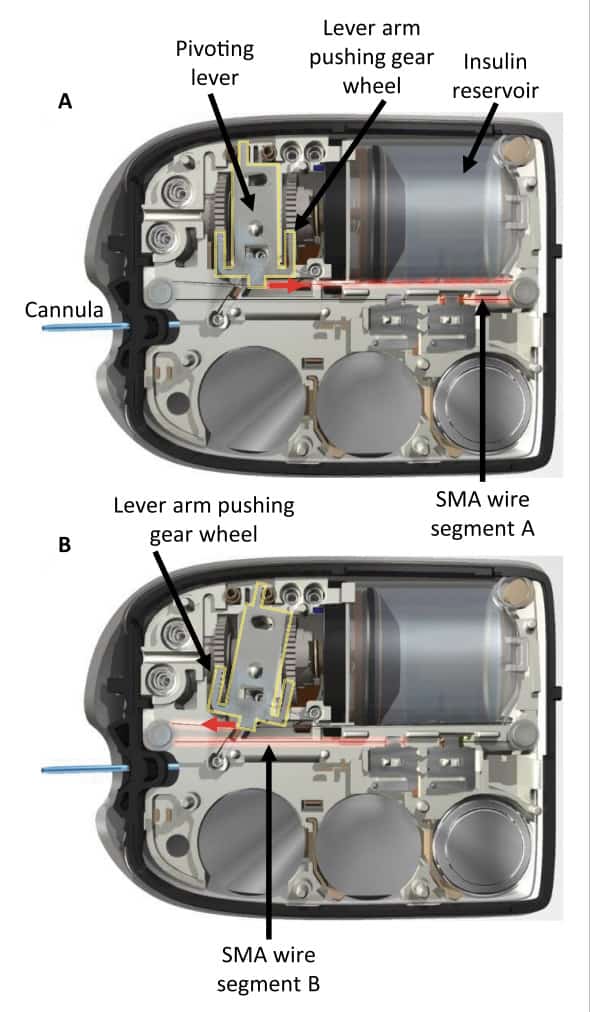Have you ever wondered, how does the Omnipod Work? So have we! We scoured the internet and talked to some of our favourite Podders to learn as much as we could about how the Omnipod works and wanted to share what we learned with you.
Disclaimer: Please check out CIM’s Partners Page to learn more about the companies we work with. It’s important for CIM to recognize and to disclose that our writing may be biased based on the fact that the Omnipod provides sponsorship and support to CIM. We work hard to get information into the hands of the diabetes community whenever we feel it may help people live life without limits.
What is different about the Omnipod Insulin Management System?
If you are brand new to Omnipod (read: What is Omnipod?), we suggest checking out Connected in Motion’s Tech Update blog about the Omnipod Insulin Management System. In short, Omnipod is a tubeless insulin pump made by Insulet, a company whose mission is to make the lives of people with diabetes easier. Insulet was founded in Massachusetts back in 2000 and officially brought to Canada in 2011. Interested in learning more about how the Omnipod came to be? Read more about what inspired Insulet’s co-founder to create the product – one that is now used by 140,000 adults and youth around the world today.
There are two parts of the Omnipod System: The Pod and the PDM (which will be updated with the launch of Omnipod DASH in Canada).
The Pod and Personal Diabetes Manager (PDM) communicate wirelessly to deliver continuous insulin based on your personal settings—giving you what you ask for, when you ask for it. You’ll need to keep the PDM within 5 feet of the Pod to program a bolus or make a change to your settings, otherwise, you don’t need the PDM with you at all times.
Tubed Pump versus Pod: What are the mechanics?
For anyone who started on an insulin pump before 2011, you likely have experience with a tubed insulin pump. In a tubed system, your pump is typically warrantied for 5 years, is non-disposable, and is where all of the mechanics that pump you your insulin are housed. You would wear an insulin pump site on your body, which attaches to the pump via tubing. The sites are disposable – you throw those out and replace them every 3 days.
An Omnipod looks a little bit different. The entire pump mechanism as well as the insulin reservoir is housed inside the pod, which is replaced in its entirety every 3 days. There is no extra pump site. The site is a part of the Pod itself.
Omnipod Reservoir
The insulin reservoir in an Omnipod is INSIDE the pod, and can be filled with a maximum of 200 units. When filing the reservoir, you inject insulin directly into the pump. The filling of the reservoir is actually what ‘wakes up’ the pod. Once you’ve put 85 units of insulin into the reservoir, the pod is ready to be primed. Priming is done using the PDM.

Omnipod: How it actually works
We don’t want to go too far down the rabbit hole of pump mechanics, but we did want to share a few interesting things we learned. Omnipod uses a mechanism called Shape Memory Alloy (SMA) wire technology to pull a tiny lever back and forth, delivering 0.05 unit insulin doses. Tiny pieces of wire inside the pump are heated alternately. Each time one is heated, it contracts. When it cools, it expands. This movement allows tiny gears inside the pump to rotate and inject insulin.
Omnipod Insertion
Essentially, the Omnipod is inserted using the PDM. Once the pod has been primed and then is attached to the body with its adhesive, the Start button on the PDM can be pressed, causing a stainless steel needle to be deployed. It is in and out in 1/200 of a second! Once it retracts, a tiny soft cannula stays in place under the skin to allow for insulin delivery.
Source: Omnipod Insulin Pump mechanics 2019, schematic diagram, Novel Bluetooth-Enabled Tubeless Insulin Pump: Innovating Pump Therapy for Patients in the Digital Age, Journal of Diabetes Science and Technology, accessed 22 October 2020, https://journals.sagepub.com/doi/pdf/10.1177/1932296818798836
We’re excited to see the continued advancements of the Omnipod system in years to come!





